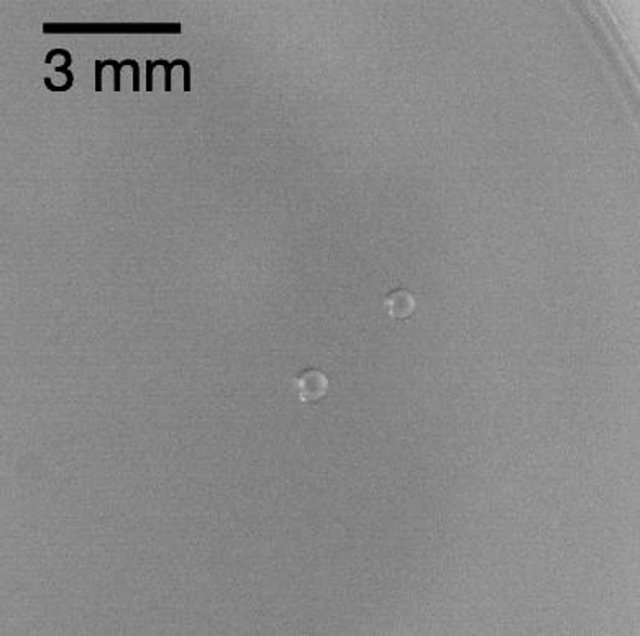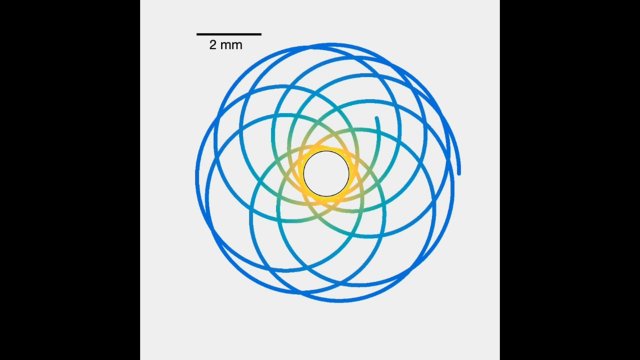They look like planets. Two droplets move in orbits on an ice cold fluid surface. They attract each other, and by almost frictionless movement on their own vapour, they skate around each other. It is a fascinating mechanism that could be used for preparing and transporting biological samples with a minimum of contamination. Researchers of the University of Twente publish about this in their paper ‘Capillary Orbits’ in Nature Communications of 2 September.
The phenomenon that floating objects attract each other and cluster together, is known as the Cheerios Effect, after the ring-shaped breakfast cereal. But if you would take two small balls floating on the water, they would clearly not start moving in the way that is shown in this new publication. Friction simply is much too high for that. The essential difference is that the droplets, in this research, float on the vapour layer that forms between the droplet – at room temperature, initially – and the very cold liquid nitrogen beneath. The droplet skates across the surface, just like the ‘water strider’ insect can walk over water. Using one droplet, the effect is already remarkable, as the researchers proved in their earlier 'PNAS' publication. Still, you could imagine that using two droplets, they would start behaving like bouncing billiard balls. The fact that they, instead, start moving in orbits, has to do with surface tension. The weight of one droplet distorts the shape of the fluid surface, causing the other droplet to move. This resembles general relativity, in which the mass of one celestial object influence the orbits of others by curvature of space-time.
Freezing
The circumstances do change ‘on the move’, however, as the droplets get colder and colder, changing the speed and interaction. Although small, friction grows as well. From that moment on, the droplet movement cannot longer be compared to planet orbits: the orbit of droplets will be spirally shaped, as the researchers show in their calculations and simulations. What will happen if many droplets are released on the surface is an interesting, though complex, next step.
The way the movement of the droplet is controlled, could be a way of moving vulnerable biological examples and manipulate them without the need of putting them into a container or tube, risking contamination. The sample is even deep-frozen 'on the move'.
The research has been done by UT’s Physics of Fluids group and the Max Planck – University of Twente Center for Complex Fluid Dynamics.
The paper ‘Capillary Orbits’ by Anaïs Gauthier, Devaraj van der Meer, Jacco Snoeijer en Guillaume Lajoinie, is published in Nature Communications on 2 september.







